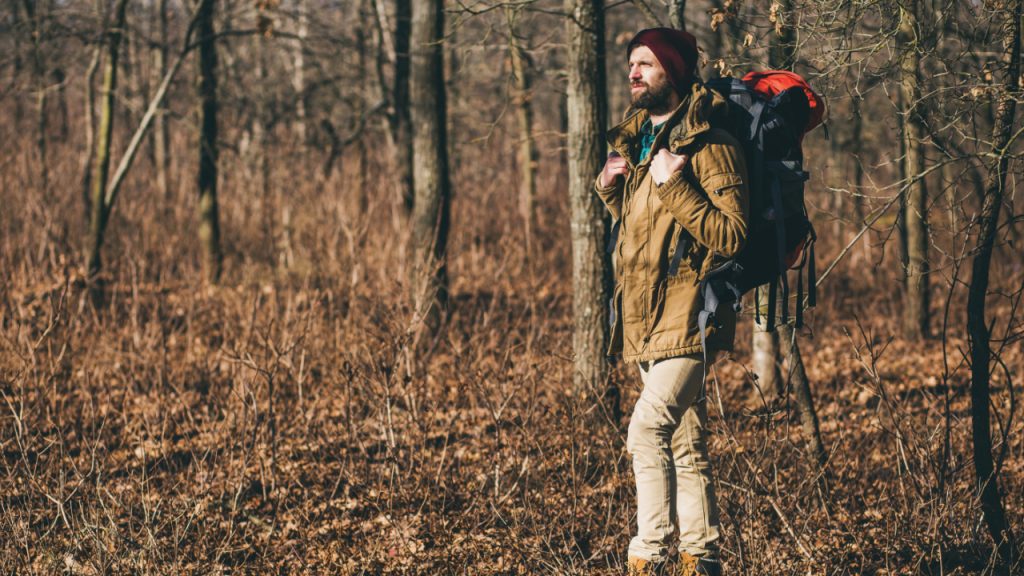Imagine needing to navigate from one point to another without a map, compass, or GPS. It might sound like something out of a survival film, but it’s a scenario anyone could face.
I’ve often relied on maps and compasses during my adventures, but what happens when you don’t have these tools? Before smartphones took over, people turned to nature to guide them. Whether you’re deep in the wilderness, lost at sea, or wandering an unfamiliar city, the environment holds subtle yet powerful clues to help you find your way.
By tuning in to your surroundings and applying some tried-and-true techniques, you can regain your bearings and make your way back to safety. Here’s how to navigate with nature as your guide.
Let the Sun Point the Way

The sun is a natural compass. In the Northern Hemisphere, it rises in the east and sets in the west. At midday, it leans south, providing a reliable indicator of direction. To refine this, try the shadow stick method: plant a stick upright in the ground, mark where its shadow falls, wait 15 minutes, and mark the shadow’s new position. The line between the two marks runs east-west, with the first mark showing west. Knowing this can help you orient yourself even in dense woods where other visual landmarks are blocked.
Chart Your Course with the Stars
When night falls, stars take over as navigational aids. In the Northern Hemisphere, locate the Big Dipper. Its two outermost stars point directly to Polaris, the North Star, which remains fixed in the northern sky. In the Southern Hemisphere, the Southern Cross constellation serves as a guide to the south. These celestial markers have steered explorers for generations and remain as reliable as ever. On clear nights, even unfamiliar constellations can indicate general directions once you observe their consistent paths.
Look to Trees and Moss for Clues
Nature’s growth patterns offer hints about direction. Trees in the Northern Hemisphere often grow fuller on their south side, where sunlight is strongest. Moss tends to flourish on the damp, shaded north-facing sides of trees and rocks. These aren’t foolproof methods but can complement other navigation techniques effectively. When using this method, be sure to check multiple trees or rocks to confirm the pattern rather than relying on just one.
Let the Wind Guide You
Wind patterns can help orient you if you’re familiar with regional weather. In many areas, prevailing winds blow consistently from one direction. For example, in the UK, winds often come from the west. Feeling the breeze and understanding the area’s typical patterns can provide an additional layer of guidance. Pay attention to surrounding vegetation too, as plants and trees often grow leaning slightly away from strong prevailing winds.
Follow Water to Safety
Streams and rivers act as nature’s roadways. If you’re lost and find a water source, follow it downstream. Most rivers lead to larger bodies of water, settlements, or human-made structures. In mountainous areas, smaller streams flowing downhill can guide you to valleys where roads or trails are more likely to appear. Listening for the sound of running water in the distance can also help you locate streams if they’re out of sight.
Improvise with a Sundial
An analog watch can double as a makeshift compass. Point the hour hand at the sun, then split the angle between it and the 12 o’clock mark to find south in the Northern Hemisphere. In the Southern Hemisphere, aim the 12 o’clock mark at the sun, and the midpoint between it and the hour hand points north. It’s simple and surprisingly effective. If you don’t have a watch, you can approximate this method by observing the sun’s position over time.
Follow Wildlife Behaviour
Wildlife often offers clues. Birds tend to fly toward water at dawn and dusk, while well-worn trails made by deer or other large mammals often lead to water or food sources. Observing their habits can provide vital hints about your surroundings. Even insect activity can indicate a nearby water source or open ground, especially if you notice bees or dragonflies.
Spot Distinct Landmarks
Natural landmarks, like mountains, rivers, or distinct rock formations, act as excellent reference points. Use them to track your progress and maintain direction. Noticing where a feature lies at the start of your journey can help you orient yourself later. Try sketching or mentally noting the shape and position of key landmarks to avoid doubling back or losing track.
Rely on the Moon
Even the moon can help with navigation. During its crescent phase, imagine a line drawn between the tips of the crescent, extending down to the horizon. This line roughly indicates south in the Northern Hemisphere and north in the Southern Hemisphere. Though subtle, the moon can quietly guide you in the right direction. If the full moon is rising, it will generally be in the east, setting in the west several hours later.
Read the Clouds
Cloud movement often reflects wind direction, which can help you orient yourself. High-altitude clouds tend to drift from west to east in many regions. Tracking their motion over time gives an idea of direction when the sun or stars aren’t visible. Observing the layering of clouds can also hint at weather changes, which might affect your chosen route.
Follow Insect Paths
Even insects can point you toward essential resources. Ants typically travel in straight lines to and from water sources, while bees often shuttle between flowers and their hives. These tiny creatures can lead you to water or vegetation, helping you get your bearings. Watch for clusters of flies or mosquitoes, which may also signal water nearby.
James is a former logistics coordinator and wilderness safety instructor, whose practical experience taught him the value of sensible preparedness and calm resilience. Passionate about self-reliance, James teaches everyday skills—like water purification, emergency communication, and outdoor safety—to help people confidently handle life's disruptions without fear or overwhelm. His approachable style combines real-world insights with relatable, personal stories and experiences.



